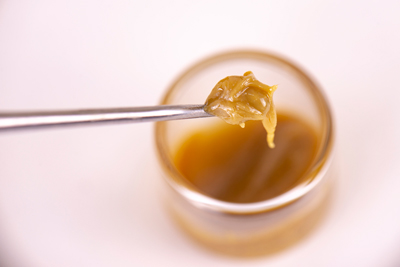It was only a matter of time until cannabis concentrates made their way into the mainstream. With marijuana legalization sweeping the nation, people are starting to become more open-minded about the various ways to consume cannabis. Concentrates are one of the oldest forms of cannabis consumption and have a rich history that dates back centuries. In this blog post, we will explore the origins of cannabis concentrates and discuss how they have evolved over time!
Hash Oil: An Early Form of Cannabis Concentrate
Dabs originated thousands of years ago as hashish, which is a form of cannabis trichomes that have been extracted and compressed. Trichomes are the resin glands on cannabis or hemp flower buds, stems, and leaves. They’re rich in cannabinoids, terpenes, flavonoids, and other healing chemicals. Hashish has been used by several civilizations in India, Persia, and China for medical and religious purposes.
Who Invented Dabs?
Dabs (a highly concentrated cannabis extract) are generally thought of as a modern development, but the production and use of this product dates back at least to the early 1970s, when a smuggling organization known as The Brotherhood of Eternal Love produced it.
Back in the late 1960s and early 1970s, a notorious network of cannabis smugglers and LSD evangelists flooded the nation with acid and marijuana, before a series of arrests and charges toppled them.
The Brotherhood of Eternal Love’s smuggling activities began in Afghanistan when the nation was mostly peaceful, and the first arrivals of “hippie tourists” from the United States and Europe were greeted with open arms.
The Brotherhood’s early years were characterized by an emphasis on hashish production, which is a centuries-old practice in the area. The Brotherhood discovered that low-quality hashish smuggled to Western markets fetched a premium once sold there, where high-quality cannabis was still difficult to come by. They realized, however, as the smuggling operation got larger and more complicated, that further concentrating this hash before export would make it considerably easier to transport without being detected.
The Cannabis Extraction Process
The Brotherhood of Eternal Love’s chief chemist, Ronald Stark, is credited by none other than the DEA itself as the inventor of butane hash oil and modern cannabis concentrates.
The Brotherhood obtained a steady supply of BHO from Kabul, Afghanistan. When the group shut down operations after an explosion at their manufacturing facility, the supply of BHO was discontinued. THC levels in cannabis oil during this time had a wide range of 10 to 30 percent.
As the general public began to become aware of this new cannabis concentrate, publications began to describe its existence and production processes. D. Gold’s Cannabis Alchemy: The Art of Modern Hash Making, published in 1973, details honey oil creation using pure alcohol and activated charcoal. In Michael Starks’ (unrelated to Robert Stark) 1977 book Marijuana Chemistry: Genetics Processing and Potency, he described the creation of hash oil using a variety of solvents.

Modern Concentrates
In 1999, when Erowid, a popular science website dedicated to providing information about psychoactive plants and chemicals, published “Hash Honey Oil Technique,” which described to the public for the first time the contemporary open-blasting extraction process. Due to the highly combustible butane used by amateurs, many BHO labs have exploded. Despite this, many amateurs continue to utilize this technique. Open-blasting hydrocarbons like propane and butane led to the more refined and advanced closed-loop extraction system, in which the solvent is captured and recycled.
Blending certain gases like butane and propane was found to improve the extraction process by keeping pressures low and boosting output, so soon producers learned that combining them could increase efficiency. The concentrate produced as a result of this process has more of the plant’s cannabinoids and terpenes, resulting in a more flavorful and potent smoking experience. Pressure-driven solventless extraction has also been developed. In contrast to other extractors, the rosin technique employs pressure alone to get concentrates out of plant material.
Manufacturers are also looking for new methods to extract THC from cannabis plants, including color remediation, in order to improve the look and color of extracts. A filtering column packed with a variety of filtration materials may remove impurities from the extract and result in an amber-hued concentrate with excellent shelf-appeal.
The Last Toke
As cannabis concentrates become more popular, a variety of methods are being used to produce them. The history of these concentrates is fascinating, and the process continues to evolve. With such a wide range of THC levels and flavors available, it’s no wonder that they are becoming so popular. What new method do you think will be developed next?
Whatever it may be, we’ll make sure you can find it at Frost Exotic Cannabis.


